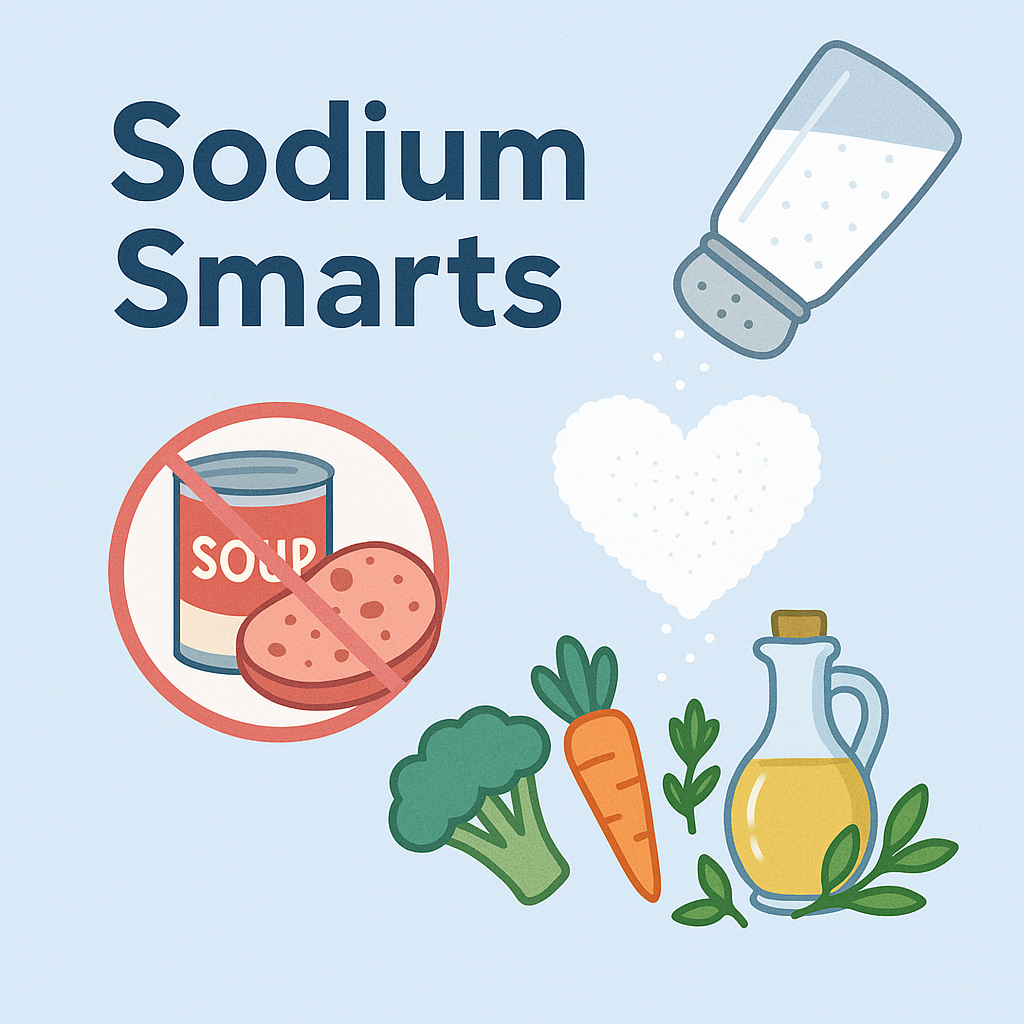Understanding Sodium: How Much Is Too Much?
Sodium often gets a bad reputation in the health and nutrition world—and for good reason. Excessive sodium intake has been linked to high blood pressure, heart disease, and stroke. Individuals with hypertension, heart disease, liver or kidney disease, or those experiencing edema are typically advised to limit their sodium intake to help manage symptoms and reduce health risks.
However, sodium isn’t inherently bad. In fact, it plays essential roles in the body, including maintaining fluid balance, supporting nerve function, aiding muscle contraction, and regulating blood pressure. The key lies in finding a healthy balance: consuming enough sodium for proper bodily function while avoiding excess that can contribute to chronic disease.
How Much Sodium Do You Need?
A good starting point is to know the Recommended Daily Allowance (RDA) for sodium:
|
Age/Population
|
Sodium (mg/day)
|
|
1–3 years
|
1500
|
|
4–8 years
|
1900
|
|
9–13 years
|
2200
|
|
14–18 years
|
2300
|
|
19–50 years
|
2300
|
|
Sensitive populations*
|
1500
|
*Sensitive populations include adults over 50, African Americans, and those diagnosed with hypertension, diabetes, or chronic kidney disease.
Note: Always consult your healthcare provider to determine if you need a more specific sodium restriction.
High-Sodium Foods and Better Alternatives
While sodium is naturally present in whole foods—and even in drinking water—over 70% of our sodium intake comes from processed and restaurant foods. To reduce your intake, try swapping high-sodium items with healthier alternatives:
|
High Sodium Foods
|
Healthier Alternatives
|
|
Cold cuts or deli meats
|
Low-sodium deli meat; fresh meat is best
|
|
Condiments (ketchup, BBQ sauce, soy sauce)
|
Mustard, vinegar, olive oil, or fresh herbs and spices
|
|
Canned soups and vegetables
|
No-salt-added or low-sodium versions; or use fresh/frozen
|
|
Pre-seasoned rice/noodle mixes
|
Unseasoned versions; flavor with your own herbs/spices
|
|
Frozen meals
|
Choose options with 500 mg sodium or less—or cook fresh
|
Understanding Sodium Labels
Reading nutrition labels can help you make informed choices. Here’s what different sodium claims mean:
- Sodium-free or salt-free: Less than 5 mg of sodium per serving
- Unsalted or no salt added: No salt added during processing
- Very low sodium: 35 mg or less per serving
- Low sodium: 140 mg or less per serving
- Reduced/less sodium: At least 25% less sodium than the regular product
- Light/lite in sodium: At least 50% less sodium than the regular version (but may still be high in sodium)
Small Changes That Make a Big Difference
While added table salt contributes only about 11% of daily sodium intake, it’s still worth cutting back. Each shake of a saltshaker adds roughly 40 mg of sodium. Instead, use garlic, onion, and herbs like rosemary, basil, and thyme to flavor your food without the added salt.
Conclusion
Sodium is essential—but like many things, it’s all about balance. By learning your personal sodium needs, choosing lower-sodium alternatives, reading food labels, and cooking with fresh ingredients, you can protect your heart and kidneys while still enjoying flavorful meals. Making mindful, small changes today can lead to big health benefits tomorrow.
